Last December, Team Bodybuilding.com athlete Quiana Welch announced her pregnancy. Seeing as how she's an experienced and elite-level Olympic lifter and CrossFit athlete, she knew she wanted to keep lifting to some degree during her pregnancy. She knew—of course—that she wanted to do it safely, for both her and the baby. But she also knew that the majority of the "fit mommy" fitness programs out there weren't her style.
So what did she do? She called Brianna Battles. Battles is the founder of Pregnancy and Postpartum Athleticism, an online course for coaches to learn how to safely train and effectively coach athletes while they are pregnant and postpartum.
After hitting it off, the two women have used Welch's pregnancy and Olympic lifter status to bring even greater awareness to pregnancy and postpartum health for the growing number of female strength athletes. Their goal is to educate women on the right ways to prioritize long-term health and physical functions, without completely giving up the sports and activities they love.
Here are some key things Battles advises during pregnancy and postpartum for strength athletes.
1. Don't Look for Easy Answers in the "Standards"
The American College of Obstetricians and Gynecologists advises 150 minutes of moderate aerobic exercise per week, and says you can continue doing the workouts that you've always done, with your healthcare professional's approval. However, it also lists "safe" exercises as walking, swimming, stationary bike, and modified yoga.[1]
The American Pregnancy Association says to "listen to your body" and that "weight training should emphasize improving tone, especially in the upper body and abdominal area. Avoid lifting weights above your head and using weights that strain the lower back muscles."[2] On the super-conservative side, doctors have been known to tell women never to pick up anything over 10 pounds while pregnant—a laughable concept for women who, say, already have a toddler in the house.
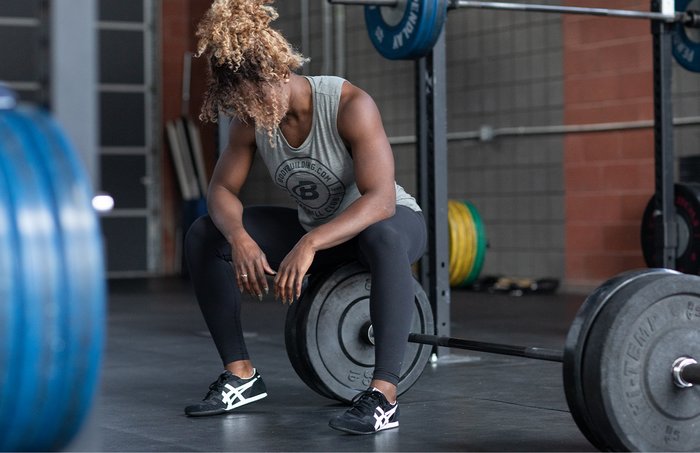
Needless to say, the grey area here is dark and large, especially for an experienced strength athlete who knows proper form. Battles' approach is to allow—in cooperation with the athlete's doctor—for the athlete to perform most of her normal exercises for as long as she can, modifying the weight and intensity throughout the pregnancy and keeping a close eye on how the body responds. So during the early part of Welch's pregnancy, many (not all; more on that in a second) of the movements she was accustomed to doing were still on the table, but far lighter, and using as much rest as needed. Later in the pregnancy, as Welch got bigger and closer to delivery, some movements naturally moved out of the rotation.
"It's all about making adjustments to the overall strategy and how they're performing the different movements during pregnancy and postpartum," Battles says. "That's really where I try to shift my work as a coach: not having these hard rules, but giving women an overall adjustment based on what they really want out of this chapter of their lives. What are the little things that they can do during pregnancy to better manage their body, especially at a time when there's a lot of uncontrollable variables and stressors on the abdominal and pelvic floor?"
2. Care for Your Core
This is one that Battles—and many, many fit women before her—had to learn the hard way.
"When I got pregnant with my son six years ago, the advice was either 'Just do some prenatal yoga,' or the other end of the pendulum, to, 'Do what you've always done.' Significant generalizations on either side," Battles recalls. "Being a strength and conditioning coach, I thought I knew best, and I went pretty hard. Then, when my bellybutton and abs didn't look normal postpartum, I knew something wasn't completely right."
What Battles was experiencing was diastasis recti, a separation of the left and right sides of the rectus abdominus muscle and a spreading of the linea alba, or the line down your six-pack. It is normal to a certain degree during pregnancy, but can be problematic postpartum, when it can contribute to back pain and other physical discomfort, urine leaking, and in extreme cases, abdominal hernia.
Heavy straining or lots of ab-intensive exercises during pregnancy have been implicated as potential contributors to diastasis, which led Battles and Welch to be very conservative about certain movements in the CrossFit lineup.
"You don't want any added pressure in your belly. Kipping pull-ups are an example," Welch explains. "If you look closely, you can see the separation of my rectus abdominis, or both sides of my abs. I can physically do the kipping pull-ups, but that doesn't mean I should. It forces a whole lot of pressure, which could basically further separate them."
Diastasis also factors into how Battles recommends women approach breathing—and by extension, weight selection—during pregnancy.
3. Change the Way You Breathe and Brace
One of the biggest modifications they made to Welch's training was her breathing during lifts, for many reasons that can affect both the pregnancy and postpartum condition. Just like with core-stretching moves, it's all about avoiding excessive pressure on the abdomen, and the pelvic floor.
"She's a high-level Olympic lifter. She's going to have to hold her breath and generate as much support in her core system as possible [during heavy lifts]," Battles explains. "But does she need to do that all the time for every lift throughout her pregnancy and postpartum? Absolutely not. When the system is already taking a hit from pregnancy, we don't need to add to that with our load, our intensity, or our strategy behind how we're performing these movements."
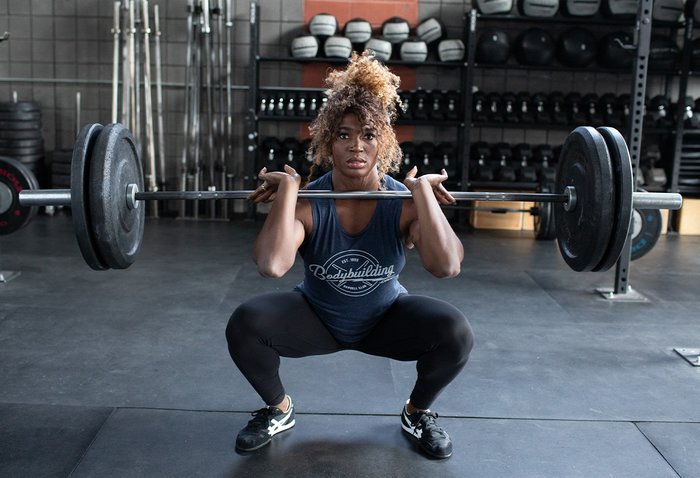
Battles' recommendation: Don't lift any weight that requires serious bracing or holding your breath. She points to 75-80 percent of 1RM on big lifts as the point where bracing goes to the next level, but depending on the woman, the pregnancy, the phase of the pregnancy, and the lift, a far lower number may be better. And she's adamant that there's no shame in dialing things way, way back.
"Anything under that percentage will reduce the need for extra pressure to a system that already has a lot of pressure on it now, or when she's postpartum. We have to be mindful of her pelvic floor while it's in this vulnerable chapter," Battles says.
Welch has two ways she likes to alter her breathing patterns to help avoid over-bracing.
"Typically, when I would squat, I would take my big breath in and brace because we need that intra-abdominal pressure—especially if you're wearing a belt," she says. "Now, there are two ways you can do it. You can do a big inhale before, then exhale throughout the whole squat. That's what tends to work for me. The other option is to inhale on the way down and exhale as you're coming up."
4. Dial Back the "Athlete Brain"
"Just because you can do it doesn't mean you should" is a mantra for Battles in her coaching. She says that's something that a lot of strength athletes in particular don't always like to hear, because performance has been a way of life for them.
Welch says the mantra took the form of an internal conversation she would have with herself in the gym.
"I would ask myself, 'Is it absolutely necessary for me to squat crazy-heavy weight while pregnant? Like, I could, but do I want to? Instead, I'll just do more reps and less weight. Now's not the time to be cool for the internet," Welch says.
Battles says one of the toughest parts about working with strength athletes is addressing the "I'm invincible" mindset they have. Many struggle with the idea of backing off and watching their bodies change. Athletes are trained to push through pain, and often "listening to your body" doesn't apply when you're training hard for competition. Yet it's something that pregnant women need to do, both for themselves and their baby.
"The ones who can dial back that 'athlete brain' and can make some adjustments to their approach are the ones who typically end up having a better return and sustainability in their life. It's really not just about this chapter; it's about 10 and 20 years from now," Battles says.
Battles doesn't want to spread the idea that all pregnant or postpartum women are vulnerable creatures. It's just that they're not totally invincible, either.
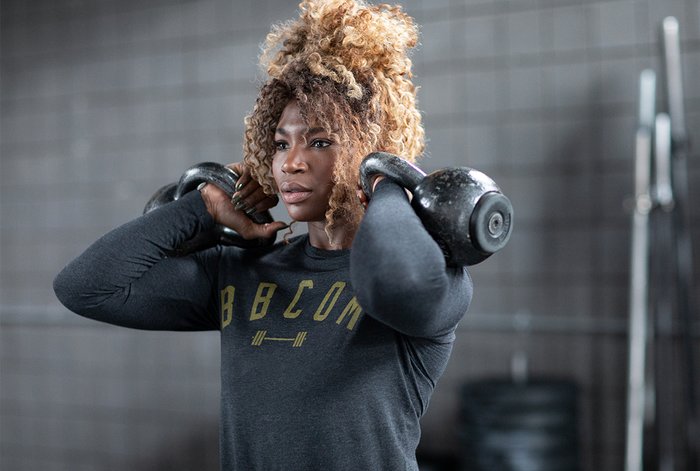
5. Accept That Your Body Will Change. It's Supposed To!
As I explained in my article "What Female Lifters Need to Know about Strength and the Scale," the new generation of female strength athletes can have a complicated relationship with their bodies and their appearance—and that's when they're not pregnant. The changes that often accompany pregnancy, like weight gain, crazy cravings, and wildly unpredictable energy levels, can be especially jarring for athletes.
Welch says she had a more or less accepting mindset about her body changing going into the pregnancy, and she says she's told many women that's the key: Accept that things will change, even just for the time being. Repeat it as much as necessarily and it makes everything a whole lot easier.
"As far as body image goes, thankfully I haven't struggled too much. I knew my body was going to change and that I wasn't going to be able to work out as much, or the same way I was used to," she explains. "I looked at it as only 9-10 months out of the game. My body changing is actually really cool! I'm creating a human, so I'm not going to beat myself up about that."
But Battles also wants to make clear that "the game," as Welch calls it, sometimes fundamentally changes after the baby is born.
"This desperation to go back isn't healthy, because you are changed forever, physiologically. That doesn't mean you can't be strong and train the way you like to, but that message of 'bouncing back' is detrimental to the majority of the population," she says.
Her advice? Be understanding, continue to be as conservative as needed, and above all, be patient.
6. Don't Follow Any Postpartum Plan Blindly
"You'll see a lot of women jump right into a random fitness program created by someone who doesn't have credentials, experience, or evidence backing their protocols," Battles says. "A woman may already be feeling like her vagina is falling out, she's given birth at least once, and now you're telling her to do skiers and burpees and mountain climbers in an at-home 12-week program. Is that really appropriate? Usually, no. But we see it a lot."
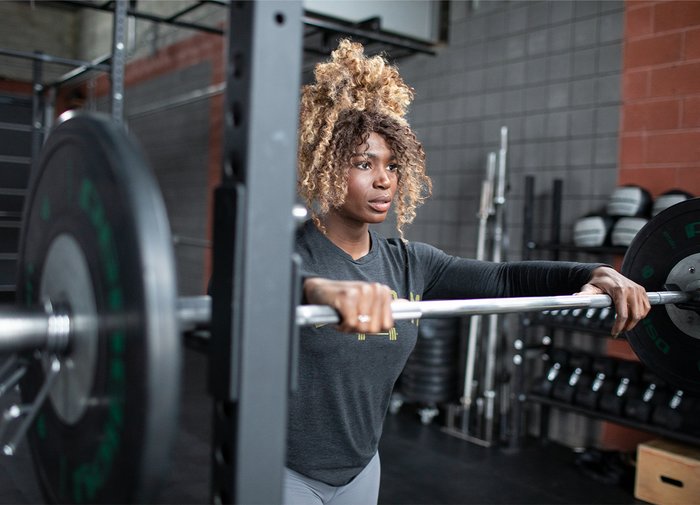
The problem isn't that there's anything inherently wrong with those movements. Instead, it's that programs push intensity before a new mother's body is ready. Welch's post-birth plan—now that she's given birth to her son—has her starting things off easy with bodyweight movements, then progressing slowly through modified movements, including rehab exercises and working with a pelvic floor physical therapist.
7. Work with a Good Pelvic Floor Physical Therapist Postpartum
Battles highly stresses this because a lot of women don't even know that pelvic floor PTs exist. But it could be a huge difference in long-term pelvic floor function. Your pelvic floor is the muscles that support your pelvic organs, aid bladder control, and play major roles in sexual arousal and orgasms.[3] Pelvic floor problems are more prevalent among women who give birth vaginally rather than through a cesarean section, but they're by no means exclusive to vaginal births. And in the case of women who plan to lift weights in the years to come, prioritizing the pelvic floor can be especially important.
"It's really critical for women to have that as a resource when they're recovering postpartum, because an OBGYN is not going to 'clear' them for activity in the same way a pelvic floor physical therapist would," Battles says. "The standard 'six weeks before returning to physical activity' is really arbitrary advice, and that doesn't mean you're actually ready to run, or go to boot camp, or CrossFit."
Aside from any stretching or damage that occurs to your core, pelvis, or other muscles, pregnancy and childbirth can alter hormones, leading to things like prolapse and incontinence.[4] This isn't fun when you're wanting to get back to doing high-impact or high-pressure activities that you were doing before.
A specialist can help you figure out what's special about your particular situation, recommend rehab activities, and help you make an action plan to get you back to your sport.
8. Think "Real," Not "Ideal"
The most important things to remember? Every woman is different, and every pregnancy is different, so programming will vary depending on an individual's circumstances. Some women, because of their particular situation, may be totally unable to train during a pregnancy except for light activity—or they might even be put on bedrest by their doctor for a period of time. Others may be able to manage modified exercises well into the third trimester. And what "worked" for a woman during one pregnancy may not work in another one.
Likewise, some women look back on their pregnancy fondly. For others, it's a constant struggle. Welch says her pregnancy was a bit more in the latter camp, and she wants to share the real side of it on social media, that place where perfection is usually what gets shown.
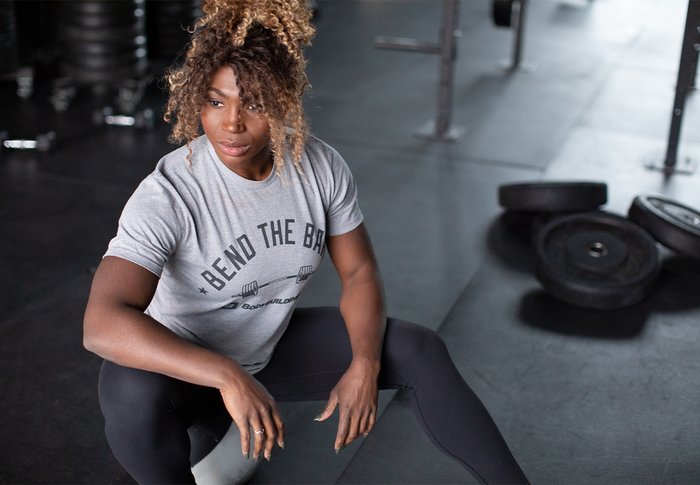
"It's different for different people, but for me pregnancy is not that much fun," she says. "Black, single, female. And I'm a pretty decent athlete on top of that. So, I feel I have to share these things I'm learning about pregnancy and training, because there are people that are at least one of those categories and they have no idea that certain things are possible."
Her and Battles' advice line up there. Do what you can to learn what is best for your particular situation. Stay safe, and do what you love, but also understand that all the training you've done before you get pregnant—all that strength, coordination, and conditioning—can help you both during your birth and afterward. Find your pace, and just like in training, respect the process you're undergoing.
Want a doctor-approved postpartum fitness plan that you can follow at your pace? Check out Jamie Eason's Post-Pregnancy Fitness Trainer in Bodybuilding.com BodyFit Elite!
“Scaling Recommendations for the Pregnant Athlete,” by Brianna Battles and Heather Osby, is a handy (and free) guide to working out during your pregnancy.
Consult with a physician before starting an exercise program while pregnant.
References
- American College of Obstetricians and Gynecologists—Women's Health Care Physicians: FAQ. (n.d.). Exercise During Pregnancy FAQs. Retrieved from https://www.acog.org/Patients/FAQs/Exercise-During-Pregnancy
- American Pregnancy Association. (2015). Pregnancy Exercise Guidelines. Retrieved from https://americanpregnancy.org/pregnancy-health/exercise-guidelines
- International Society for Sexual Medicine. (n.d.). What is pelvic floor physical therapy? Retrieved from https://www.issm.info/sexual-health-qa/what-is-pelvic-floor-physical-therapy/
- Fonti, Y., Giordano, R., Cacciatore, A., Romano, M., & La Rosa, B. (2009). Postpartum pelvic floor changes. Journal of Prenatal Medicine, 3(4).

